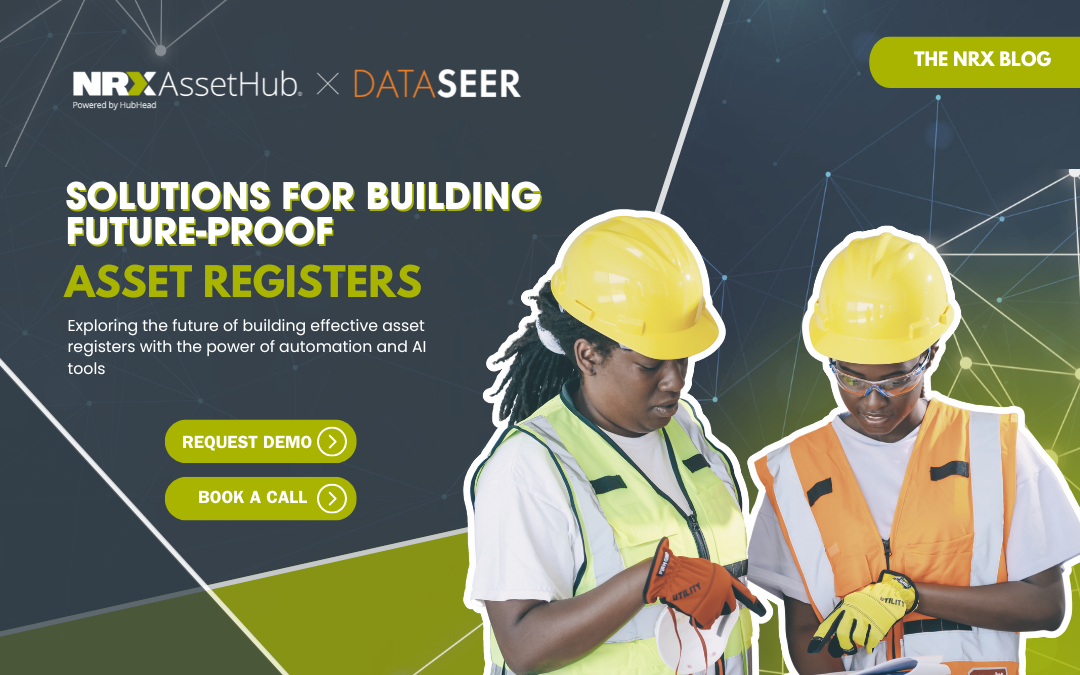The Blueprint for a Future-Proof Asset Register
Creating a future-proof asset register is a strategic process that enhances maintenance, reliability, and decision-making. At its core, an asset register is more than just a list; it’s a dynamic repository of critical equipment data. This becomes especially important in industries reliant on physical assets, like manufacturing, utilities, and oil and gas. However, many organizations face challenges with outdated formats, incomplete data, and inefficient manual processes.
To overcome these challenges, it’s essential to digitize legacy data, establish clear asset hierarchies, and integrate registers with EAM systems like IBM Maximo, SAP PM, or Oracle EAM. By taking these steps, companies can ensure their asset data is organized and accessible.

Key Solutions for Digital Transformation of Asset Registers
In today’s world, digital tools like digital twins and automation are reshaping how asset registers are maintained. Converting legacy documents, such as P&IDs, into digital formats streamlines asset tracking and improves integration with CMMS and EAM systems.
Key solutions for this transformation include:
- Automated Data Extraction: AI-driven tools extract data from technical drawings (P&IDs, isometrics, and electrical diagrams), saving time compared to manual processes.
- Cloud-Based Collaboration: Cloud platforms make asset data accessible in real time, improving collaboration and reducing versioning issues.
- CMMS/EAM Integration: Direct integration with EAM systems ensures seamless updates and enhances maintenance planning.
By digitizing asset data, companies can pave the way for predictive maintenance and digital twin technology, increasing both accuracy and efficiency.

Ensuring Data Accuracy and Completeness: The Role of Automation
The effectiveness of an asset register hinges on the quality of its data. Poor data can lead to inefficiencies and unexpected downtime. To address this, automation is key.
Here are a few ways automation helps:
- Automated Tag Extraction: In brownfield projects, automated tools validate existing data against technical drawings, ensuring greater accuracy.
- Validation Against Drawings: By comparing register data with as-built diagrams, companies can maintain data integrity and reduce errors.
- Real-Time Updates: IoT sensors and automation tools keep asset registers updated as equipment statuses change, minimizing human error.
By using these automated solutions, companies not only improve data reliability but also make their asset registers more actionable.

Integrating Predictive Maintenance with Your Asset Register
A future-proof asset register supports more than just asset tracking. It also plays a vital role in proactive maintenance strategies. Predictive maintenance, driven by data from the asset register, can reduce downtime and extend equipment life.
Key solutions for predictive maintenance include:
- Condition Monitoring: Sensors and IoT devices feed real-time data into the asset register, enabling proactive maintenance.
- Analytics and Machine Learning: Algorithms analyze historical data to predict equipment failures before they happen.
- Preventive Maintenance Plans: Integrating maintenance schedules into the asset register streamlines planning and improves outcomes.
By integrating predictive maintenance, businesses can enhance reliability and reduce costs over time.

Scaling Your Asset Register for the Future
As businesses grow, their asset registers must scale too. A future-proof asset register should accommodate more assets, complex data, and advanced functionalities.
Scalable solutions include:
- Cloud-Based Platforms: These platforms offer flexibility for growth without the need for complex IT infrastructure.
- Digital Twin Integration: Digital twins offer real-time asset simulations, aiding long-term management.
- Data Governance: Automating data governance ensures accuracy and compliance, even as the asset register scales.
By adopting these scalable solutions, businesses can ensure their asset registers remain effective as their operations expand.

In Conclusion
Building a future-proof asset register requires embracing digital transformation, automation, and scalable solutions. When done right, businesses can enhance their maintenance processes, predict equipment failures, and ensure long-term operational efficiency.
How Can We Help You?
HubHead and DataSeer’s AI Service combines human-level understanding with machine speed to build a scalable knowledge data store of engineering designs. By integrating these solutions with your existing EAM/CMMS systems and creating a digital twin, you can enhance decision-making and streamline your maintenance processes. Contact us for a free demo or book a call.
The Importance of Effective Asset Registers
Embracing Automation – The Future of Data Extraction
Extracting Data from Scanned Images and Paper Drawings
Share this article




